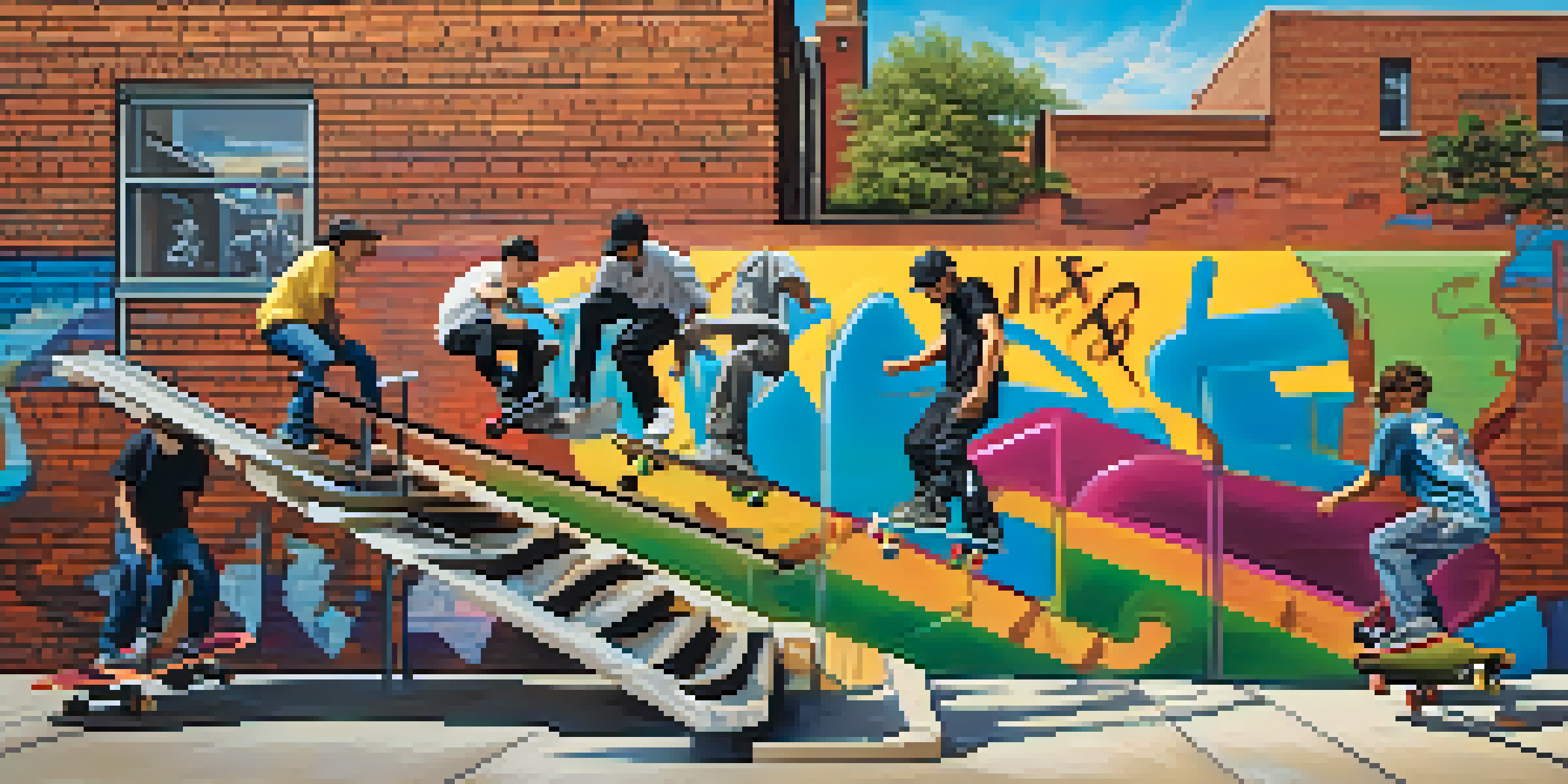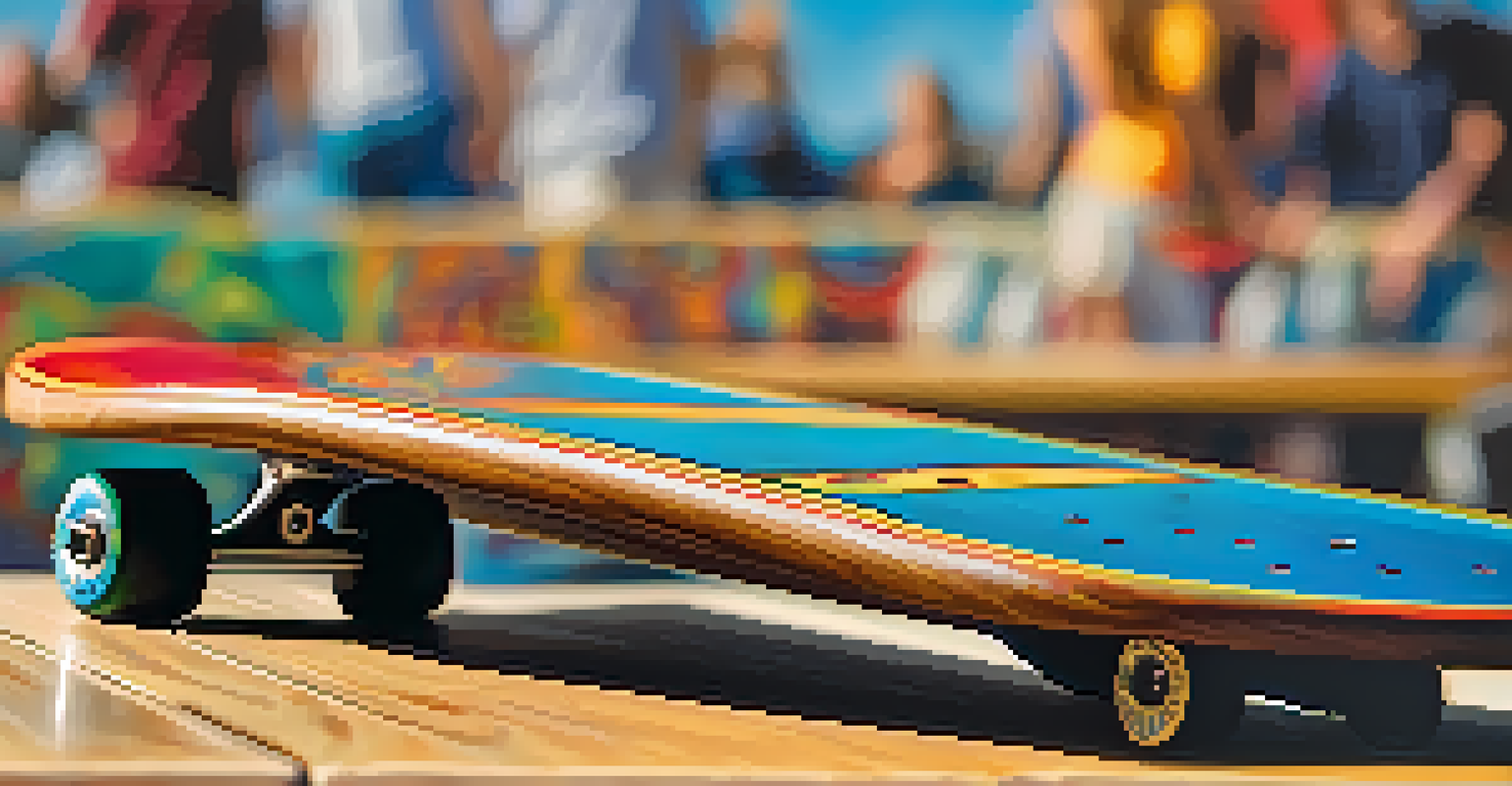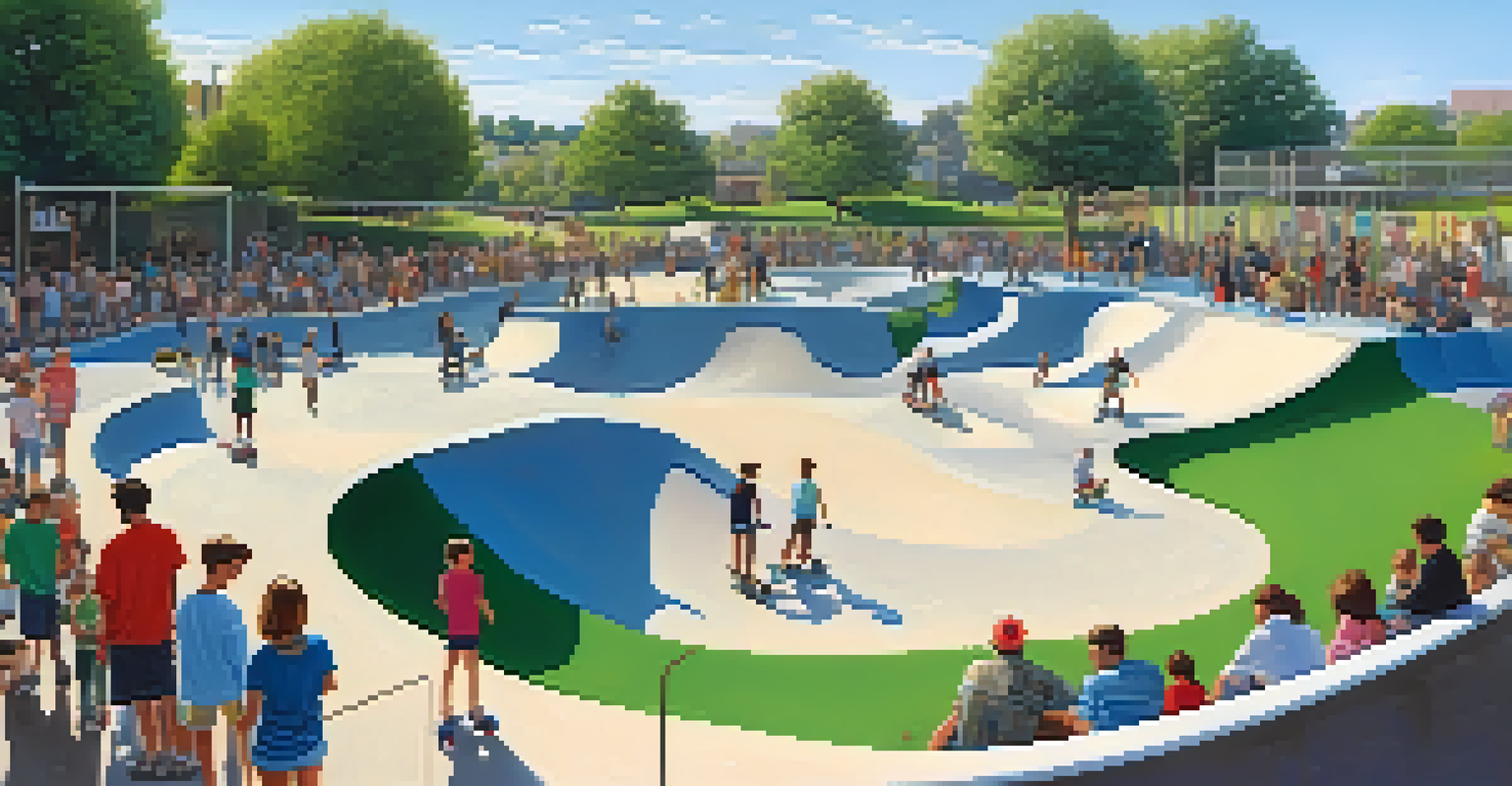The Evolution of Skateboarding: California's Pioneering Spirit

The Birth of Skateboarding in California
In the late 1940s, California surfers sought a way to ride the waves when the ocean was flat. They started attaching wheels to wooden planks, creating the first skateboards. This innovation was a game-changer, blending the thrill of surfing with the streets of California, and giving birth to a new sport.
Skateboarding is not just a sport; it's a lifestyle.
As these early skateboards gained popularity, kids across California began to experiment with different designs. They crafted their boards from various materials, such as metal and plastic, which led to the emergence of the first commercial skateboards in the 1960s. This marked the beginning of a cultural phenomenon that would grow exponentially.
Skateboarding quickly transformed from a casual pastime into a full-fledged movement. By the mid-1960s, skateboarding was not just a hobby; it was a lifestyle that captured the essence of California's laid-back spirit and adventurous attitude.
The Rise of Skateboarding Culture
The 1970s witnessed the explosion of skateboarding culture, fueled by the advent of skate parks and competitions. The first skate parks opened in California, providing a dedicated space for skaters to showcase their skills and creativity. This era also saw the birth of iconic skateboarding magazines that shared tricks, tips, and the burgeoning skate lifestyle.

During this time, influential skateboarders like Tony Alva and Stacy Peralta emerged, bringing attention to the sport and inspiring a new generation of skaters. Their fearless tricks and distinctive styles captivated audiences and defined the sport's aesthetic. Skateboarding was becoming more than just a sport; it was an art form.
Skateboarding's California Roots
Skateboarding originated in California during the late 1940s as surfers sought to replicate their ocean experience on land.
As skateboarding grew in popularity, it also became more commercialized. Brands began to recognize the potential of this new subculture, leading to the introduction of signature skateboard decks and apparel. This shift helped solidify skateboarding's place in mainstream culture, while still retaining its rebellious roots.
The Impact of the 1980s on Skateboarding
The 1980s marked a turning point for skateboarding, as the sport reached new heights of popularity and innovation. The introduction of the 'vert' ramp allowed skaters to perform aerial tricks, pushing the boundaries of what was possible on a skateboard. This evolution in skateboarding techniques attracted even more enthusiasts.
The best part of skateboarding is the community that surrounds it.
However, the decade also saw challenges, including a decline in interest due to the rise of alternative sports. Yet, skateboarding's core community remained resilient, continuing to innovate and create. This period was characterized by a sense of camaraderie among skaters, who supported each other in pushing their limits.
The emergence of video skateboarding also played a significant role during this era. Skate videos showcased the talent of skaters and helped to spread the sport's popularity across the globe. The combination of cutting-edge tricks and creative filming brought skateboarding into the homes of millions.
Skateboarding's Resurgence in the 1990s
The 1990s saw a resurgence in skateboarding, driven by the rise of street skating and the emergence of new technologies. Urban environments became the playground for skaters, who began to use sidewalks, stairs, and rails as their canvas for creativity. This shift from ramps to streets changed the game entirely.
Skateboarding's influence on popular culture exploded during the 90s as it became a staple in music and fashion. The rise of skate punk and hip-hop music further intertwined skateboarding with youth culture, creating a vibrant community that celebrated individual expression. Movies like 'Gleaming the Cube' brought skateboarding into the spotlight, inspiring new fans.
Cultural Explosion in the 1970s
The 1970s marked a significant growth in skateboarding culture, with the establishment of skate parks and influential figures shaping its identity.
This decade also saw the introduction of more advanced skateboard designs, including wider decks and better wheels, enhancing the overall skating experience. These innovations allowed for greater maneuverability and control, helping skaters to refine their craft and push the boundaries even further.
The Digital Age and Skateboarding
With the advent of the internet in the early 2000s, skateboarding entered a new era. Online platforms allowed skaters to share videos and tutorials, fostering a global skateboarding community. This digital revolution made it easier for aspiring skaters to learn from the pros and connect with fellow enthusiasts.
Social media played a pivotal role in shaping skateboarding culture, giving rise to countless new skate influencers. Skaters could now showcase their skills and styles to a global audience, creating a sense of unity and collaboration among skaters from different backgrounds and regions. The sport became more accessible than ever.
Additionally, the rise of video games featuring skateboarding, such as the 'Tony Hawk's Pro Skater' series, brought a new level of attention to the sport. These games inspired many to pick up a skateboard for the first time, bridging the gap between digital and physical skateboarding experiences.
Skateboarding Today: A Global Phenomenon
Today, skateboarding is a global phenomenon, with a diverse community of skaters from all walks of life. The sport has evolved to include various styles, such as park, street, and vert skating, each with its own unique culture and competition scene. Skateboarding has truly become a melting pot of creativity and expression.
In 2020, skateboarding made its Olympic debut, further solidifying its status as a mainstream sport. This historic moment brought new visibility to the skateboarding community and showcased the incredible talent of athletes from around the world. The Olympics have opened doors for many skaters to pursue their dreams on an international stage.
Global Phenomenon Today
Skateboarding has evolved into a diverse global sport, gaining mainstream recognition with its Olympic debut in 2020.
As skateboarding continues to evolve, it remains rooted in its California origins. The pioneering spirit that defined the early days of skateboarding still influences the culture today, reminding us that it’s not just about tricks and competitions—it's about community, creativity, and freedom of expression.
The Future of Skateboarding: What Lies Ahead?
Looking ahead, the future of skateboarding appears bright and full of possibilities. As new generations embrace the sport, we can expect continued innovation in skateboarding techniques and equipment. Electric skateboards and advancements in materials could lead to exciting developments that enhance the riding experience.
Moreover, with the growing focus on inclusivity, skateboarding is becoming more accessible to people of all ages and abilities. Adaptive skateboarding programs are emerging, allowing individuals with disabilities to experience the thrill of skating. This commitment to inclusivity is essential for ensuring the sport continues to thrive.

As skateboarding maintains its roots while adapting to contemporary trends, the essence of the sport will endure. The community-driven spirit of skateboarding will continue to inspire, making it not just a sport, but a lifelong passion for many across the globe.